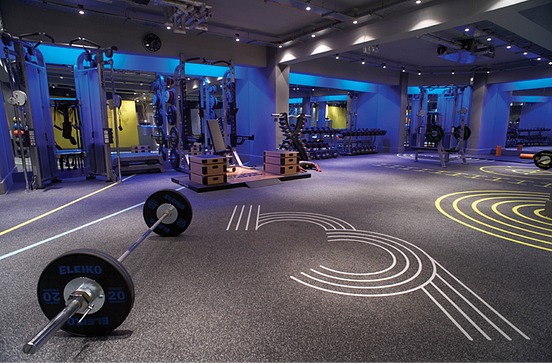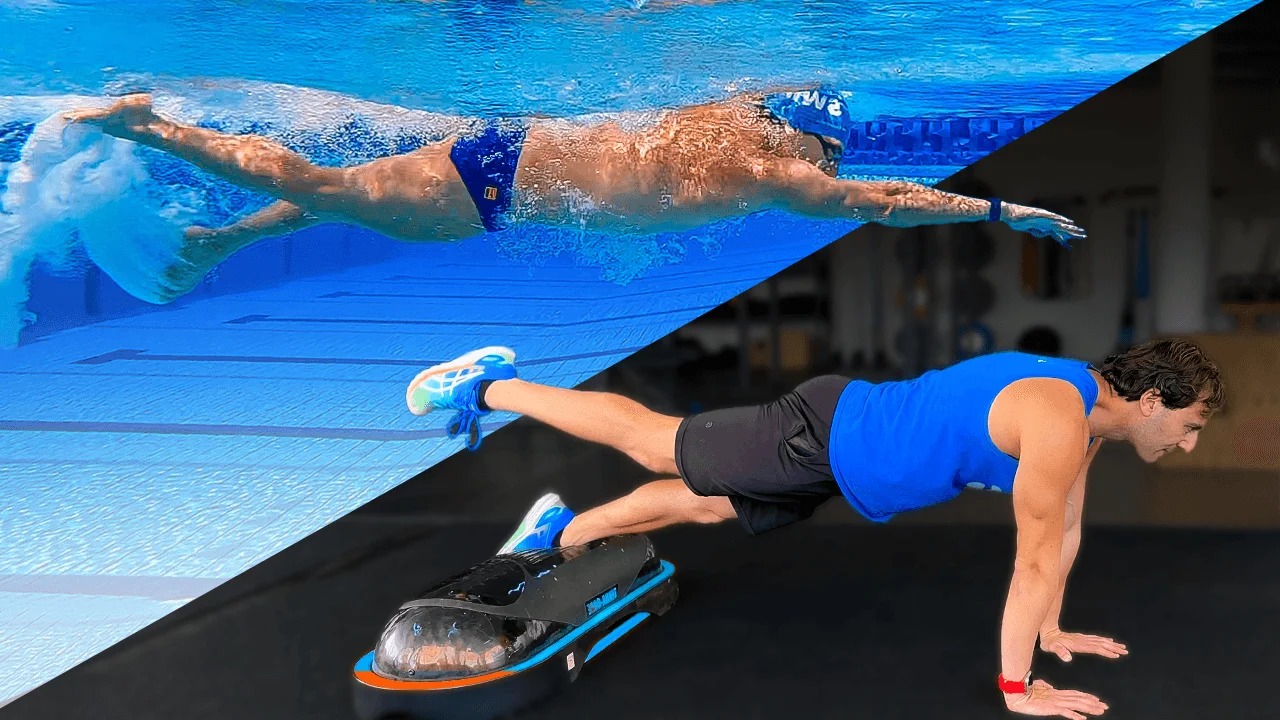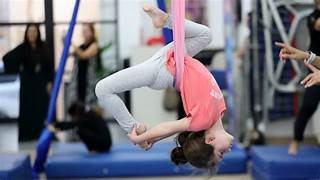
Apocalypse Fitness – Training for Survival Without Modern Gyms.
Apocalypse Fitness prepares the body and mind for survival when modern gyms and equipment vanish, focusing on functional strength, endurance, balance, and mental resilience. By turning nature and everyday environments into training grounds, this philosophy trains humans to lift, carry, climb, and adapt, ensuring readiness for unpredictable challenges, scarcity, and real-world survival situations.
💪 Fitness Guru
53 min read · 10, Oct 2025

Introduction
In an era where we rely on air-conditioned gyms, digital fitness apps, and protein shakes, few imagine what would happen if all of it vanished overnight. What if an apocalypse—be it natural disaster, war, or societal collapse—forced us back into primal survival? In such a world, traditional fitness routines become obsolete. You won’t need six-pack abs; you’ll need strength to climb, endurance to run for miles, balance to cross unstable terrain, and resilience to adapt.
Apocalypse Fitness is not a dystopian fantasy—it’s a philosophy rooted in self-sufficiency, raw physical training, and mental conditioning. It draws inspiration from ancient warrior training, military conditioning, and natural movement practices to forge a body capable of surviving and thriving when modern comforts disappear.
1. The Philosophy of Apocalypse Fitness
Apocalypse Fitness is based on one principle: Function over form.
Modern fitness often focuses on how we look; apocalypse fitness focuses on what we can do. Survival doesn’t care about your biceps—it cares if you can climb a wall, carry supplies, or escape danger. The goal is to develop usable strength, durable stamina, and mental resilience.
It blends three survival dimensions:
- Physical Readiness: Strength, agility, balance, and endurance to navigate an unpredictable world.
- Mental Fortitude: Focus, adaptability, and emotional control under stress.
- Resourcefulness: Using what’s around you—trees, rocks, walls, rivers—as your gym.
This fitness mindset rejects dependency on modern tools. It turns your environment into your training ground and your challenges into workouts.
2. The Core Principles of Survival Training
A. Functional Strength Over Isolation
Forget machines and muscle isolation. Apocalypse fitness is about compound, natural movements: pulling, pushing, lifting, carrying, jumping, and crawling. These movements mimic real-world survival scenarios—hauling gear, climbing obstacles, or carrying an injured companion.
Example workouts include:
- Log Lifts: Use fallen branches or stones for weighted squats and presses.
- Rock Carries: Carry heavy rocks to build core and grip strength.
- Tree Climbs: Build pulling strength and coordination.
B. Endurance Through Simplicity
Without treadmills or tracks, endurance must come from movement in nature. Running across uneven terrain, hiking with weight, or swimming in rivers are perfect survival simulations. This develops cardiovascular capacity and joint durability—both essential when fleeing danger or traveling long distances for resources.
C. Balance and Agility
Survival often means navigating slippery rocks, collapsed structures, or narrow paths. Training balance through barefoot running, slacklining, or parkour-like movements improves proprioception and injury resistance.
D. Mental Conditioning
A strong body means little without a strong mind. Mental training includes exposure to discomfort: cold showers, fasting, early morning workouts, or sleep-deprivation challenges. These simulate crisis conditions and harden the mind against panic and fatigue.
3. The Natural Gym: Training Without Equipment
When the gym doors close forever, nature opens hers.
Apocalypse fitness relies on the environment as the ultimate gym. Here’s how:
- Rocks: Perfect for deadlifts, presses, and carries.
- Trees: Ideal for pull-ups, climbs, and balance exercises.
- Ground: Use uneven terrain for crawling, sprinting, or burpees.
- Water: Swimming or carrying objects in water builds endurance and resilience.
Training can occur anywhere—forests, fields, or even urban ruins. The variety of terrain ensures total-body adaptation.
Example Routine (Full-Body Survival Circuit):
- 20 squats with a heavy rock
- 10 pull-ups from a tree branch
- 30-meter log carry
- 20 burpees
- 200-meter sprint
- Repeat 3–5 times.
This simple circuit enhances strength, stamina, and explosiveness—the foundation of any survivor.
4. Nutrition for Survival Fitness
In an apocalyptic scenario, nutrition becomes about efficiency and adaptability, not luxury. Forget calorie counting—focus on what sustains energy and muscle in scarcity.
A. Natural and Foraged Nutrition
Survivalists learn to identify edible plants, roots, and insects. The focus is on protein, fats, and hydration from any available source. Dried meat, nuts, seeds, and wild greens become staples.
B. Intermittent Fasting
Periods without food will be common. Practicing intermittent fasting now prepares your body to operate efficiently under low-calorie conditions. It enhances mental clarity and metabolic flexibility.
C. Water Discipline
Hydration is a critical skill. In the absence of clean water, knowing purification methods—boiling, filtration, or solar disinfection—is part of survival fitness.
5. Mental and Emotional Resilience
Physical strength gets you through the first day; mental toughness keeps you alive for the rest.
Apocalypse fitness incorporates mental resilience through deliberate stress exposure:
- Training in uncomfortable weather.
- Navigating with minimal sleep.
- Working out with limited resources.
- Facing simulated adversity.
These exercises teach you to control fear, stay logical under chaos, and build grit—the defining trait of survivors.
Mind-Body Integration Practices:
- Meditation: Enhances focus and emotional stability.
- Breath Control: Helps manage panic and maintain endurance.
- Visualization: Rehearsing survival scenarios mentally improves reaction speed in real crises.
6. Survival Skills as Part of Fitness
Apocalypse fitness isn’t just about muscles—it’s about skill-based movement. Knowing how to use your body for survival tasks transforms exercise into preparedness.
Essential Survival Fitness Skills:
- Climbing: For escape, vantage points, or resource gathering.
- Swimming: Essential in floods or water crossings.
- Carrying Loads: Transporting food, supplies, or injured people.
- Building Shelters: Requires lifting, pulling, and balance.
- Self-Defense: Strength and reflexes trained through combat drills or martial arts.
By integrating these into training, fitness becomes holistic—your body becomes your most reliable tool.
7. Training Alone: The Solitary Survivor
In an apocalypse, solitude may be inevitable. Training alone demands self-discipline and creativity. Without peers or trainers, self-motivation becomes the key weapon.
Tips for Solo Training:
- Set survival-based goals (e.g., “Carry 40 kg over 1 km”).
- Use time, not equipment, to measure progress.
- Keep a “Survivor’s Log” to track achievements and mindset.
- Celebrate small milestones—each push-up is a victory of will.
Isolation tests endurance not only of muscles but of spirit. The ability to persist without encouragement defines the ultimate survivor.
8. Real-World Inspirations
Apocalypse fitness has roots in military conditioning, hunter-gatherer endurance, and tribal fitness traditions.
- Spartan Warriors trained with minimal tools, focusing on endurance and adaptability.
- Native Tribes developed strength through hunting, carrying, and dancing.
- Modern Military Units train in environments mimicking survival conditions—mud, heat, exhaustion.
These examples remind us that survival fitness isn’t new—it’s our ancestral inheritance.
9. Modern Adaptations and Minimalist Tools
Even in today’s world, you can practice apocalypse fitness with limited tools:
- Sandbags: Replace barbells for unpredictable resistance.
- Ropes: For climbing or resistance training.
- Bodyweight: Push-ups, planks, lunges, and squats build a powerful, adaptable body.
- Backpacks: Loaded packs simulate real-world weight carrying.
By embracing minimalism, you train for both physical efficiency and psychological readiness to face scarcity.
10. The Spirit of the Survivor
Apocalypse fitness isn’t about doom—it’s about resilience, independence, and adaptability. It teaches us to rely on our bodies, not machines; on our wits, not routines. Every workout becomes a lesson in perseverance.
When civilization fades, survival belongs not to the strongest or fastest—but to those who adapt. And apocalypse fitness is the art of adaptation itself.
When society collapses and modern gyms, machines, and digital fitness routines vanish, the concept of physical training must shift from aesthetic goals to pure survival, giving rise to what can be called Apocalypse Fitness, a comprehensive philosophy that blends raw physical preparedness, mental resilience, and resourcefulness in a world stripped of conveniences, where the human body becomes the ultimate tool for enduring harsh environments and unpredictable threats, and where every movement, every ounce of strength, and every mental strategy counts for staying alive; this form of fitness draws heavily from ancestral human practices, military conditioning, and natural movement disciplines, emphasizing functional strength over muscle isolation, because in a survival scenario, the ability to lift, carry, climb, push, pull, and sprint in unpredictable conditions is far more valuable than how one’s biceps or abs look, and so exercises such as lifting heavy rocks or logs, carrying uneven loads over varying terrain, climbing trees or walls, crawling through confined spaces, and running long distances across forests, fields, or urban ruins replace traditional gym routines, with nature itself serving as the ultimate training ground where every obstacle becomes a challenge that builds practical strength and coordination while improving endurance and adaptability; endurance, in particular, takes on a whole new meaning, as it is no longer about how long one can run on a treadmill but about being able to travel long distances with minimal food or water, navigate rough terrain, and remain operational despite fatigue, while agility and balance are honed through barefoot movement, crossing slippery or uneven surfaces, and practicing parkour-style maneuvers, all of which reduce the risk of injury and enhance proprioception, making the body more versatile and capable in chaotic environments, and alongside these physical dimensions, mental conditioning forms the backbone of Apocalypse Fitness, because survival is as much a test of mind as of body, requiring emotional control, focus under stress, and the ability to make rapid decisions in high-pressure scenarios, which can be trained through exposure to discomfort such as extreme weather, fasting, limited sleep, and deliberate challenges that simulate the hardships of a collapsed society, with meditation, breath control, and visualization techniques further enhancing mental clarity and stress resilience, ensuring that the practitioner is not only physically strong but also mentally prepared to face adversity, fear, and uncertainty with calm and decisive action; nutrition, too, adapts to this philosophy, focusing less on luxury and more on efficiency and adaptability, prioritizing what sustains energy and muscle in scarcity, from foraged wild plants, seeds, and nuts to dried meat and edible insects, with intermittent fasting practiced to simulate real survival conditions, improving metabolic flexibility and teaching the body to operate under low-calorie circumstances, while water discipline and purification skills become essential components of overall fitness, ensuring hydration and health when clean water sources are limited, and training extends beyond just movement and nutrition to encompass essential survival skills, such as swimming across rivers, climbing trees or rock faces, carrying heavy supplies or injured individuals, building shelters, and practicing self-defense, turning physical training into practical preparedness, where every session directly translates into an ability to overcome real-world survival challenges; solitary training becomes a hallmark of this philosophy, since in post-apocalyptic scenarios, one may often face isolation, and building discipline, self-motivation, and creativity in the absence of gyms, coaches, or peers develops independence and perseverance, with survival-focused goals such as carrying weighted objects over distance, completing bodyweight circuits, or navigating complex terrains providing measurable benchmarks for progress, and logging achievements or reflecting on challenges enhances both physical and psychological growth, while real-world inspirations, from Spartan warriors who trained with minimal tools and maximum intensity, to hunter-gatherer tribes whose daily survival demanded agility, strength, and endurance, to modern military units undergoing extreme conditioning in adverse environments, demonstrate that apocalypse fitness is not a novel concept but a return to the ancestral human blueprint for physical preparedness; even in contemporary contexts, minimalist tools like sandbags, ropes, or loaded backpacks can simulate survival conditions, ensuring that individuals develop functional strength, resilience, and adaptability without dependence on machines or technology, and the philosophy underscores the importance of turning every environment into a training opportunity, from forests, mountains, and rivers to urban landscapes, where uneven terrain, obstacles, and natural elements challenge the body in ways a controlled gym environment cannot, creating a level of physical literacy and situational awareness critical for survival, and while the training is grueling, uncomfortable, and sometimes extreme, it is precisely these conditions that forge a body capable of enduring the unknown, strengthening not only muscles and cardiovascular capacity but also the mind’s capacity to adapt, remain calm under pressure, and respond decisively, highlighting the integral connection between physical prowess, mental fortitude, and resourcefulness; ultimately, Apocalypse Fitness is less about achieving a particular body image and more about cultivating a self-reliant, resilient, and capable human being, capable of thriving in environments stripped of modern conveniences, turning every challenge into a learning opportunity, every hardship into a strength-building experience, and every day into preparation for survival, embodying the principle that true fitness is measured not in gym selfies or personal records but in the ability to endure, adapt, and prevail when civilization as we know it ceases to exist, reinforcing that the human body is the original and most reliable machine, designed for strength, endurance, adaptability, and survival, and that by embracing this philosophy, we reconnect with our primal heritage, harness the power of natural movement, and cultivate the skills, strength, and mindset necessary to face adversity with courage, creativity, and competence, ultimately preparing not just to survive the collapse of modern society but to thrive in its absence, where every log lifted, every stone carried, every sprint completed, and every mental challenge overcome represents not just fitness but the essence of human resilience and the art of survival itself.
When modern gyms, machines, and structured fitness routines disappear due to societal collapse or disaster, survival depends on physical and mental resilience rather than aesthetics or personal records, and this reality gives rise to the philosophy of Apocalypse Fitness, which emphasizes functional strength, endurance, adaptability, and resourcefulness, focusing on movements that directly translate to real-world survival, such as lifting, carrying, climbing, running across uneven terrain, crawling through confined spaces, jumping obstacles, and balancing on unstable surfaces, all of which develop a body capable of handling unpredictable environments and heavy physical demands without the luxury of weights or machines, and at the heart of this approach is the principle of functionality over appearance, where each exercise is chosen not for how it sculpts muscles but for how it enhances the ability to lift a fallen log, carry a wounded companion, escape danger, or traverse treacherous terrain, and endurance is honed not on treadmills but through long-distance movement over forests, fields, mountains, and urban ruins, sometimes under harsh weather conditions, carrying improvised weights such as backpacks filled with rocks or water, or navigating natural obstacles, which simultaneously builds cardiovascular capacity, joint durability, and the stamina needed to survive extended physical challenges, while agility and balance are trained through barefoot movement, climbing trees, traversing narrow ledges, and performing parkour-style maneuvers that enhance proprioception and reduce injury risk, and mental conditioning is equally critical, as survival requires emotional control, focus under stress, decision-making under pressure, and the ability to endure discomfort, which can be trained through exposure to extreme temperatures, fasting, limited sleep, simulated adversity, and other challenges that build resilience, while techniques such as meditation, visualization, and breath control improve mental clarity, manage fear, and prepare the mind to respond effectively during crises, and nutrition in Apocalypse Fitness emphasizes efficiency and adaptability rather than luxury, focusing on high-protein and high-energy foods that can be foraged, hunted, or scavenged, such as wild plants, nuts, seeds, dried meat, and even insects, while intermittent fasting trains the body to function under low-calorie conditions, improving metabolic flexibility, and water discipline, including purification skills like boiling, filtration, or solar disinfection, ensures survival when clean water is scarce, and beyond physical training, Apocalypse Fitness integrates essential survival skills as part of conditioning, including swimming across rivers, climbing cliffs, building shelters, carrying heavy loads, and practicing self-defense, making workouts directly applicable to real-life survival scenarios, and solitary training is often necessary in post-apocalyptic environments, requiring self-motivation, discipline, creativity, and goal-setting, where exercises are measured by utility rather than repetition counts or aesthetic outcomes, and logging progress or reflecting on achievements enhances both mental and physical preparedness, while historical examples such as Spartan warriors, hunter-gatherer tribes, and modern military units demonstrate that functional, environment-based training has always been essential to human survival, and contemporary adaptations using minimalist tools such as sandbags, ropes, rocks, and backpacks allow individuals to practice these principles even outside of disaster scenarios, reinforcing adaptability, strength, endurance, and problem-solving skills, and the philosophy encourages turning the natural environment into a training ground, using trees, rivers, uneven terrain, and urban ruins as obstacles that challenge the body in ways a controlled gym cannot, while simultaneously improving situational awareness and practical skills, and the ultimate goal of Apocalypse Fitness is not simply to survive but to thrive in austere conditions, developing a body and mind capable of responding to adversity with competence, creativity, and resilience, where every movement, load carried, sprint completed, and challenge overcome represents a tangible increase in survival capability, and this form of fitness reconnects humans with their primal heritage, reminding us that our bodies are inherently designed for endurance, strength, adaptability, and resilience, and that by training in ways that replicate real-world demands, we not only prepare for potential disasters but also improve overall health, mental toughness, and self-reliance in everyday life, and while the approach may be intense, uncomfortable, and demanding, it cultivates a level of physical literacy and mental fortitude unmatched by conventional exercise, producing individuals who are capable of making rapid, effective decisions under stress, navigating complex terrain, sustaining themselves with minimal resources, and protecting themselves or others in high-risk situations, and thus, Apocalypse Fitness represents a holistic, integrated approach to human conditioning that unites body, mind, and environment into a single, coherent survival system, demonstrating that the essence of fitness is not measured by machines, mirrors, or metrics alone but by one’s ability to endure, adapt, and prevail when modern conveniences disappear, and ultimately, it is the embodiment of resilience, self-sufficiency, and practical strength, preparing individuals to meet the challenges of a world where adaptability, resourcefulness, and raw human capability determine not just success but survival, highlighting that the strongest, fastest, and most resourceful among us are those who train to respond to reality itself, turning every challenge into a lesson, every hardship into a strength-building exercise, and every day into preparation for survival, proving that true fitness lies not in aesthetics or equipment but in the ability to thrive in uncertainty, adversity, and change, and that by embracing Apocalypse Fitness, individuals cultivate a durable, capable, and resilient body and mind, capable of enduring hardship, navigating danger, and ultimately surviving and thriving without reliance on modern gyms, machines, or conveniences, reconnecting with the primal essence of human strength and adaptability while preparing for the challenges that no traditional workout could ever simulate.
Conclusion
Apocalypse Fitness redefines physical training as a survival necessity rather than a lifestyle choice. It integrates functional strength, endurance, mental fortitude, and resourcefulness to prepare for an unpredictable world.
By rejecting dependency on gyms, machines, and supplements, it reconnects humans to their primal origins—where fitness was not about appearance but about existence. Whether through lifting stones, running through forests, or fasting for resilience, each act shapes a body capable of facing disaster with confidence.
Ultimately, apocalypse fitness reminds us that the human body is the oldest and most reliable machine ever made—one designed for survival, self-reliance, and adaptability. When the world collapses, your gym will be the Earth itself—and your strength, the difference between survival and surrender.
Q&A Section
Q1: What is Apocalypse Fitness?
Ans: Apocalypse Fitness is a survival-based physical and mental training approach focusing on functional strength, endurance, and adaptability using natural environments and minimal resources. It prepares individuals to survive and thrive without modern gym equipment.
Q2: How does it differ from traditional gym workouts?
Ans: Unlike gym workouts that prioritize muscle aesthetics, apocalypse fitness emphasizes practical movements—lifting, climbing, carrying, and running—designed for real-world survival and self-sufficiency.
Q3: Can I start apocalypse fitness without any equipment?
Ans: Absolutely. You can train using bodyweight, rocks, trees, or backpacks. The key is creativity—turning your environment into your workout tool.
Q4: Is apocalypse fitness only for extreme survivalists?
Ans: No. While inspired by survival scenarios, anyone can adopt its principles to build raw strength, resilience, and mental toughness useful in everyday life.
Q5: What mental benefits does this training offer?
Ans: It enhances discipline, focus, emotional control, and adaptability—qualities vital not just for survival but for overcoming modern life’s stress and uncertainty.
Similar Articles
Find more relatable content in similar Articles

Underwater Workouts – Training in Pools for Strength & Endur..
Underwater workouts offer a un.. Read More

Circus Fitness – Learning Strength Through Acrobatics...
Circus fitness transforms trad.. Read More

Apocalypse Fitness – Training for Survival Without Modern Gy..
Apocalypse Fitness prepares th.. Read More

Fitness for Digital Nomads Living on the Road...
Staying fit while living as a .. Read More
© 2024 Copyrights by rFitness. All Rights Reserved.